What's New
Displaying results 4391 - 4400 of 4914

Resource | Publications,
The 8th round of annual HIV surveillance is the result of the combined efforts and contributions of many individuals and organizations. Thanks are due to all those listed below as well as to the many participants who gave their blood and shared some of their personal information.
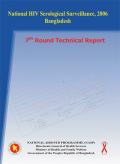
Resource | Publications,
This report summarises the findings of the 7th round of HIV serological surveillance, which has been carried out during the period from January-June 2006. On behalf of the Government of Bangladesh, ICDDR,B in close collaboration with Institute of Epidemiology, Disease Control and Research (IEDCR) conducted the surveillance.
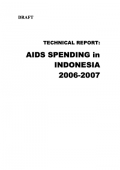
Resource | Publications,
The National AIDS Spending Assessment (NASA) is a tool/ method that had been introduced by the UNAIDS Geneva to measure the commitment of a nation in combating a global epidemic disease such as HIV and AIDS. The development of NASA 2006-2007 is a jointly teamwork involved highly motivated senior staffs of the National AIDS Commission, UNAIDS Indonesia, Department of Health and other Sectors at the central level, as well as colleagues from 3 selected provinces.
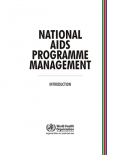
Resource | Tools,
The purpose of this course is to improve the management of national AIDS programmes by presenting a systematic process for developing and managing a comprehensive national AIDS prevention, care and treatment programme; and providing an opportunity to increase the knowledge and practice skills needed to implement such a process.
The primary audience for this training is AIDS programme managers – individuals who have the authority and primary responsibility for managing national AIDS programmes. The secondary audience includes people who can influence decision-making about the programme. This training course will be repeated periodically to take account of the turnover of people in these key positions. The training course will initially be provided at the regional level, and may then be tailored to national needs and provided within countries, for state or provincial AIDS programme managers.
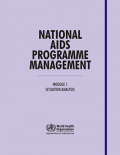
Resource | Tools,
The two overriding goals of national AIDS programmes are to reduce the transmission of HIV and to care for and mitigate the impact of HIV on those already infected. Achieving these goals requires an understanding of the extent of prevalence of HIV infection and also where it is spreading.
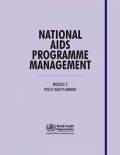
Resource | Tools,
Policy plays an essential role in guiding an effective response to HIV and AIDS. Governments use policy to state their views on a particular issue and declare the approach they will take to resolve or respond to that issue. Organizations use policy to explain to their employees the modalities of executing their work as well as norms of behaviour. Community groups use policy to advocate for what the community needs.
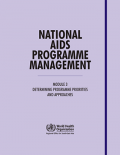
Resource | Tools,
An essential part of HIV programme planning and management is to determine the programme’s priorities and the approaches it will adopt to achieve its outcomes of HIV prevention, care and treatment.

Resource | Tools,
Different HIV epidemics require different approaches. However, regardless of the epidemic stage, it is usually more efficient to target specific populations with HIV prevention and care programmes and services. This does not mean that the impact of the epidemic is restricted to these populations.
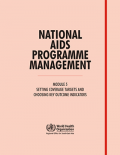
Resource | Tools,
In Modules 3 and 4, we worked on setting priorities for interventions with populations most affected by HIV. In this module, we will build on that work and set some initial targets for programmes.
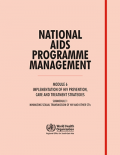
Resource | Tools,
The focus of this module is the implementation of HIV prevention, care, and treatment strategies. It is composed of 6 submodules:
- Submodule 6.1: Minimizing sexual transmission of HIV and other STIs
- Submodule 6.2: HIV prevention and care among drug users
- Submodule 6.3: HIV counselling and testing
- Submodule 6.4: The continuum of care for people living with HIV/AIDS and access to antiretroviral therapy
- Submodule 6.5: Prevention of mother-to-child transmission
- Submodule 6.6: Prevention of HIV transmission through blood





